Instruments
Lab Space
Our lab space includes a main lab for housing the 10 m3 environmental chamber, an oxidation flow reactor, and various mass spectrometers for online gas and particle analysis. There is also a wet lab for sample preparation and storage. The graduate student office of our group is next to the lab for easy access and each postdoctoral researcher will have an individual office.
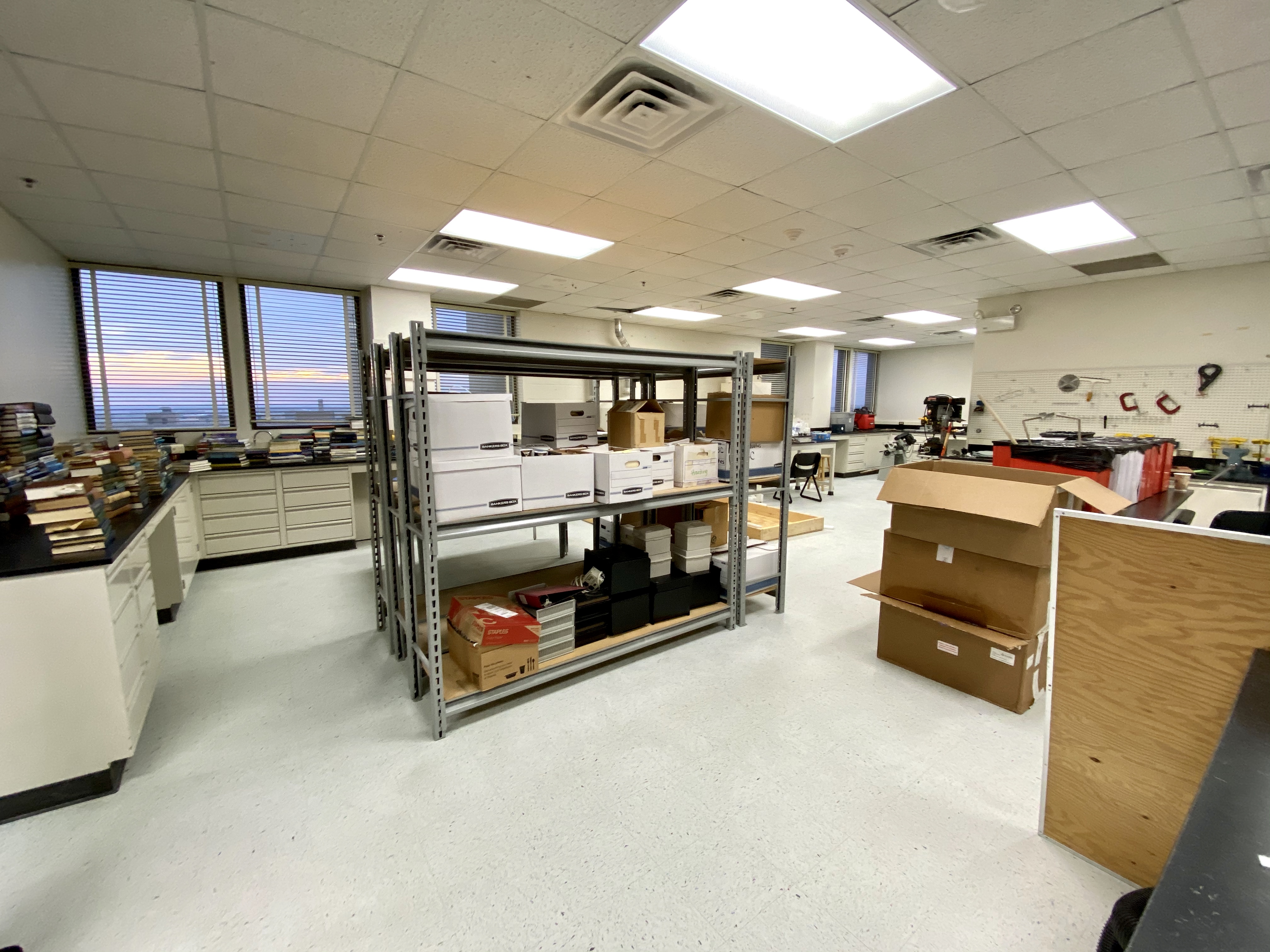
Chamber Setup
The environmental chamber consists of a 10 m3 main chamber for examining the reaction mechanisms and chemical kinetics of complex inorganic-organic aerosols and a tandem cooling-heating chamber for examining aerosol-cloud interactions.
Two major online instruments, Soot-Particle time-of-the-flight aerosol mass spectrometer (SP-ToF-AMS) and the VOCUS 2R proton transfer reactor mass spectrometer (VOCUS-2R-PTR-MS) with Vocus Inlet for Aeorsols (VIA) are connected to the environmental chamber for realtime sampling of gas and particle phase species, including secondary organic aerosols (SOA) and microplastic particles (MPP).
Particle sizes are measured by the scanning mobility particle sizer (SMPS) system and filters are used to collect particles for offline analysis.
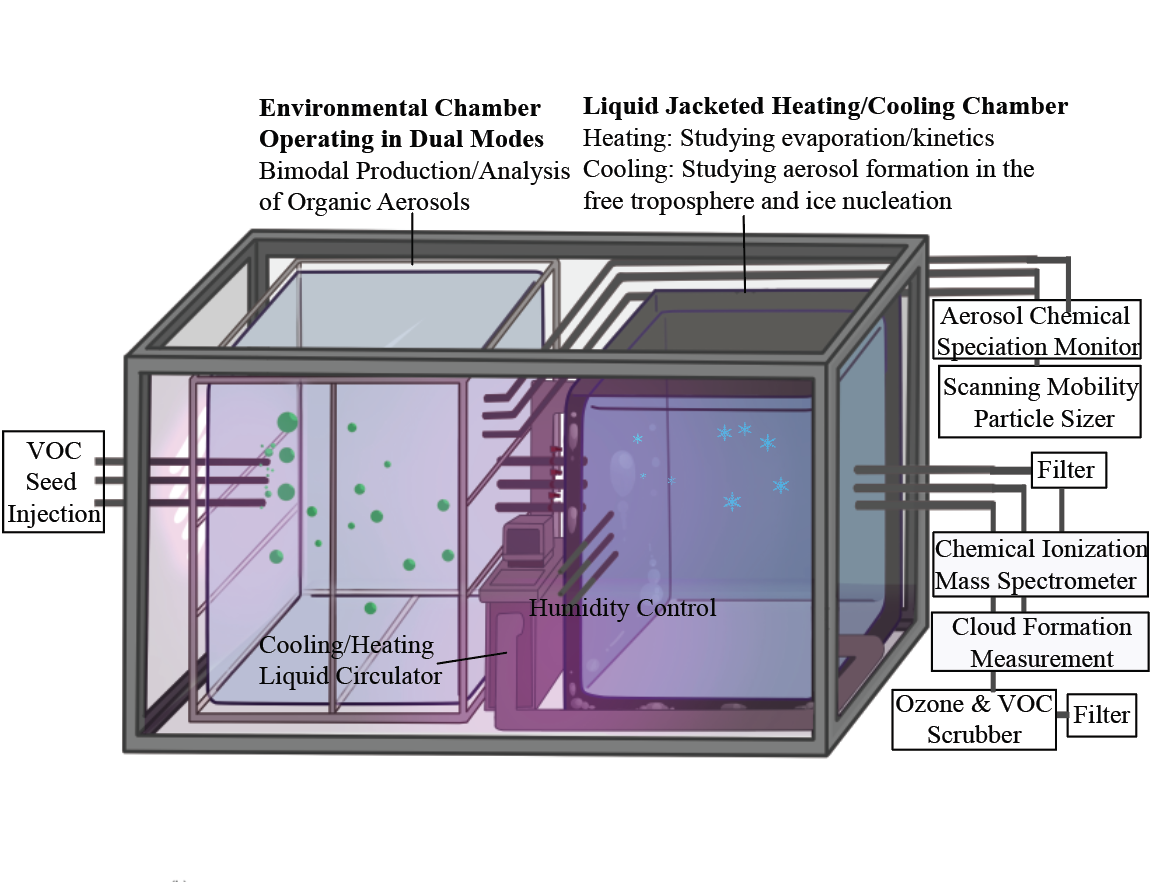
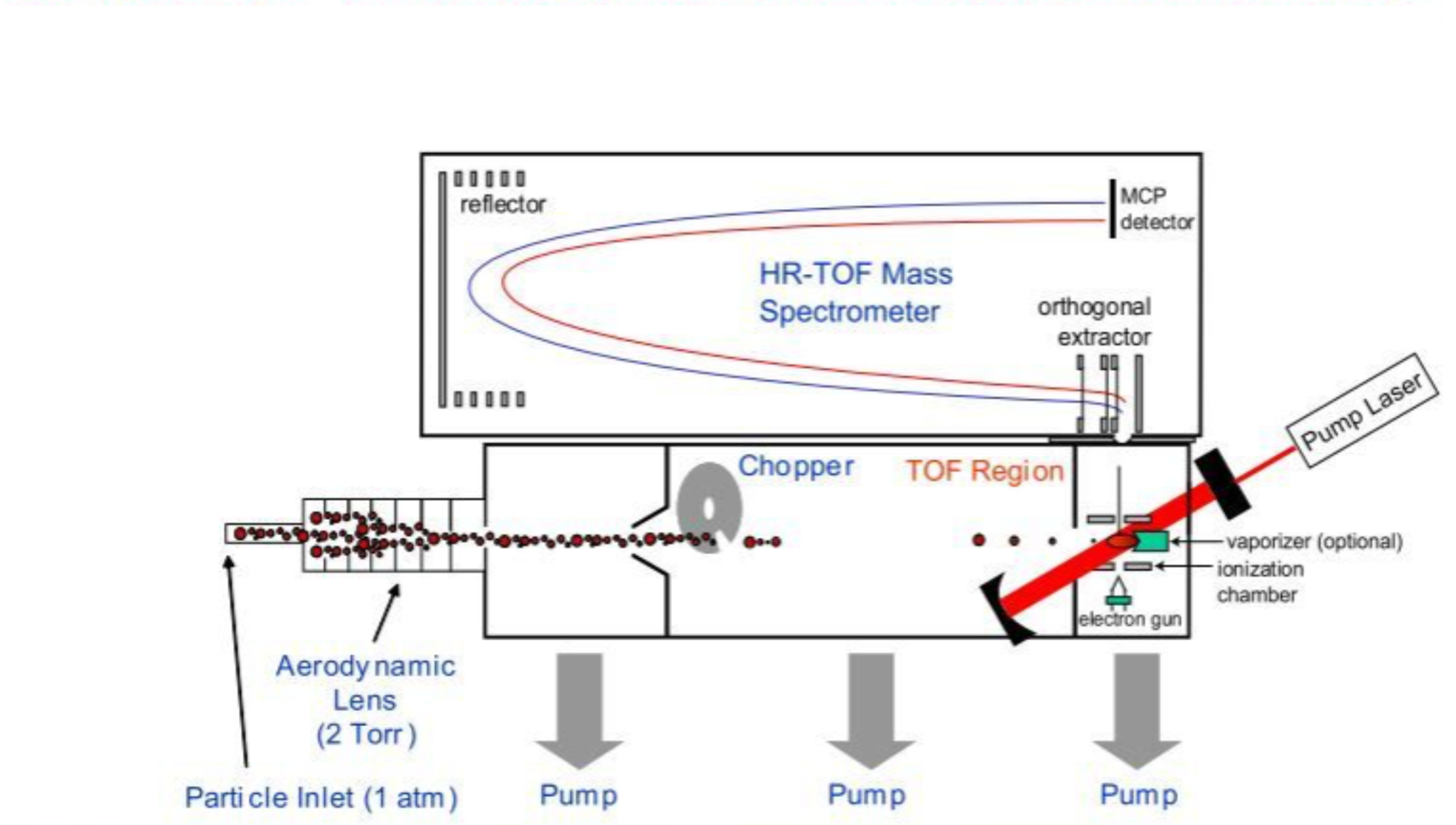
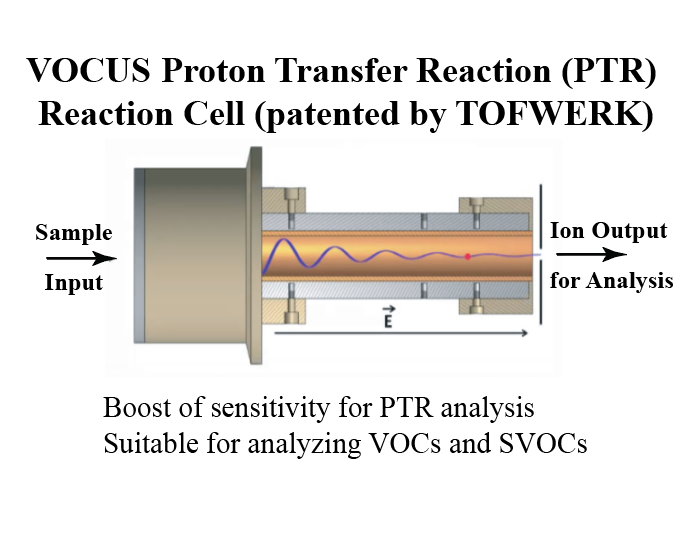
Molecular Analysis of Offline Samples
Dr. Zhang is also intersted in discovering and quantifying particle phase species collected from laboratory studies and field measurements. Particles collected onto the filters are analyzed by the Agilent gas chromatography mass spectrometry (GC-MS) and Agilent 1290 liquid chromatography with 6470A tandem mass spectrometry (LC-MS/MS) from the Geosciences and Environmental Resaerch Group (GERG) at the College of Geosciences at Texas A&M University. Molecular information about the particle phase compounds can be obtained quantitatively and combined together with the online instruments to examine the formation and reaction of aerosols.
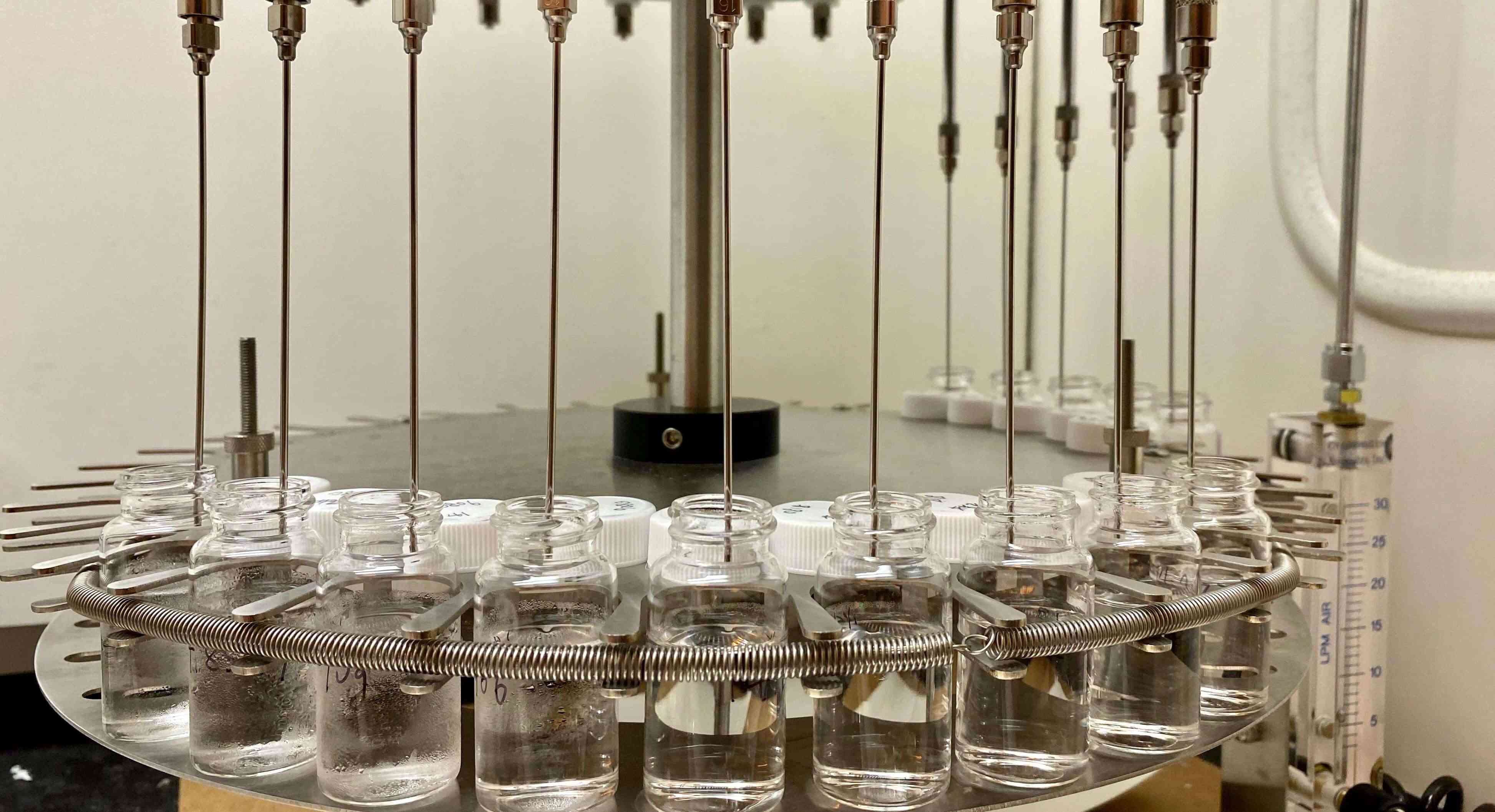
Aerosol Filter Extraction
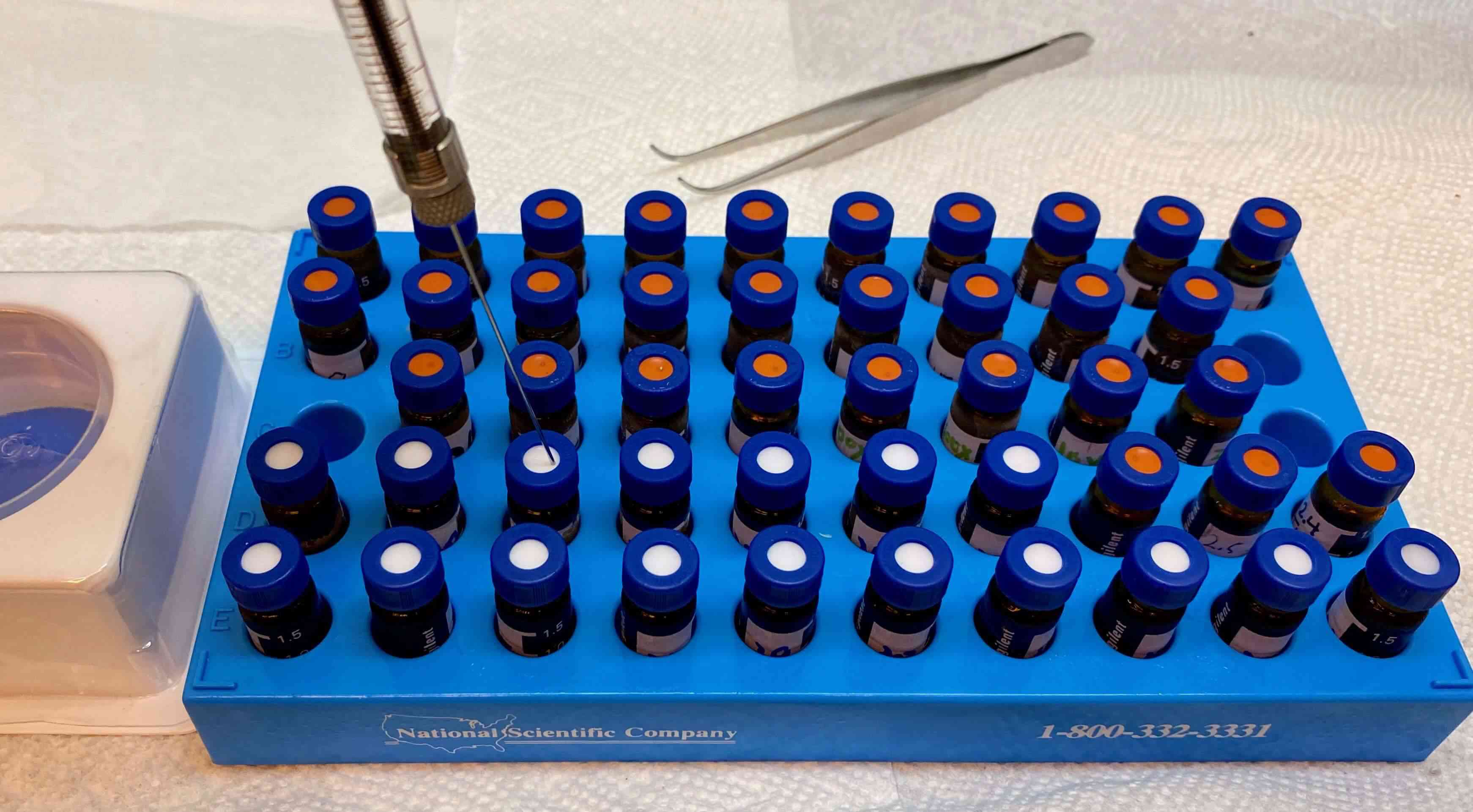
Reconstitution and Analysis
Analysis of Fundamental Aerosol Properties
Our aerosol lab also examines the fundamental physical & chemical properties of organic aerosols and nanoparticles using chemical and microscopic techniques from the Material Characterization Facility at Texas A&M. Broadband Dielectric Spectrometry (BDS) and Differential Scanning Calorimetry (DSC) are used to characterize the phase state change and glass transitions of complex aerosols, which can help understand fundamental phase transition mechanisms and aerosol-cloud interactions (photo courtesy of the Material Characteization Facility at Texas A&M).
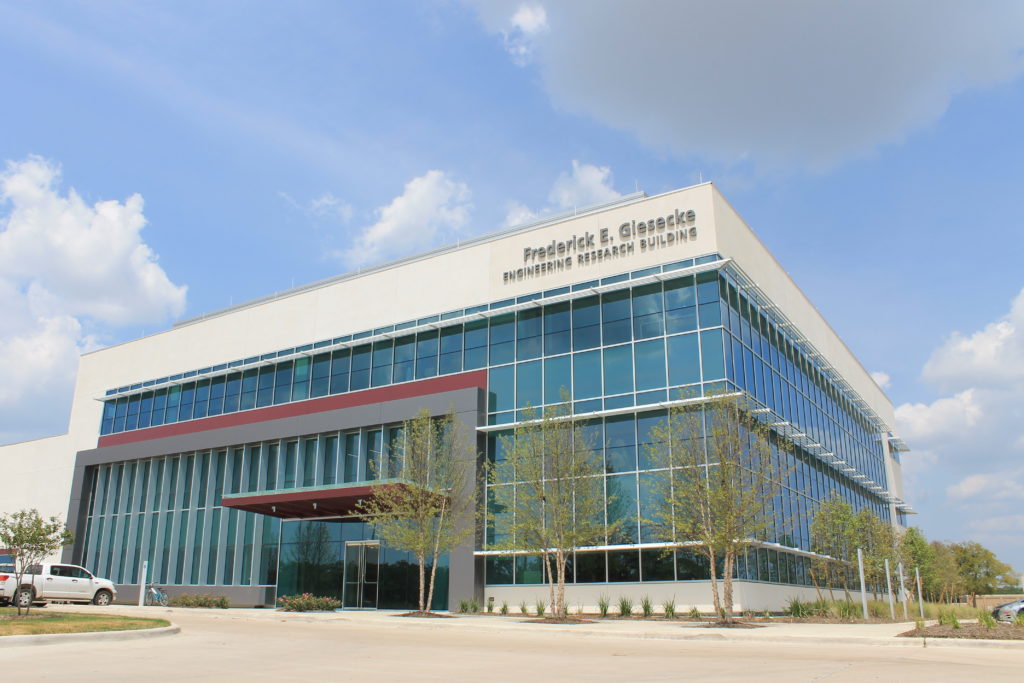
Material Characterization Facility
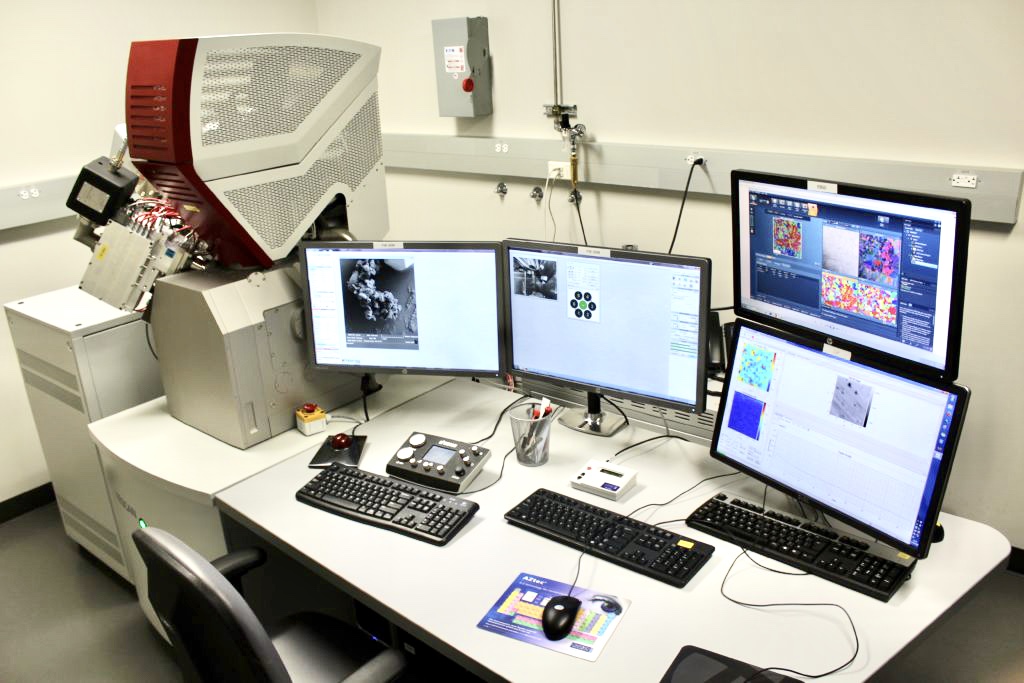
Scanning Electron Microscope
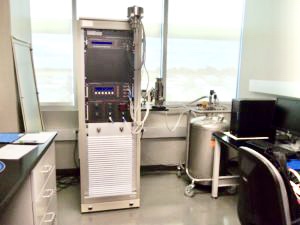
Broadband Dielectric Spectrometer
Aerosol Health Implications
Our aerosol lab is interested in examining the health implications of aerosol particles with complex physicohemical properties (including mixing state and morphology), as well as simulations on the airborn spread of respiratory virus through droplets and aerosol particles. The ACCI lab use a customized elecrtostatic precipitator (ESP) that can study the toxicological effects of complex aerosol particles at liquid-air interface, mimicing the human respiratory process, by collaborating with research labs from School of Public and College of Medicine at Texas A&M.
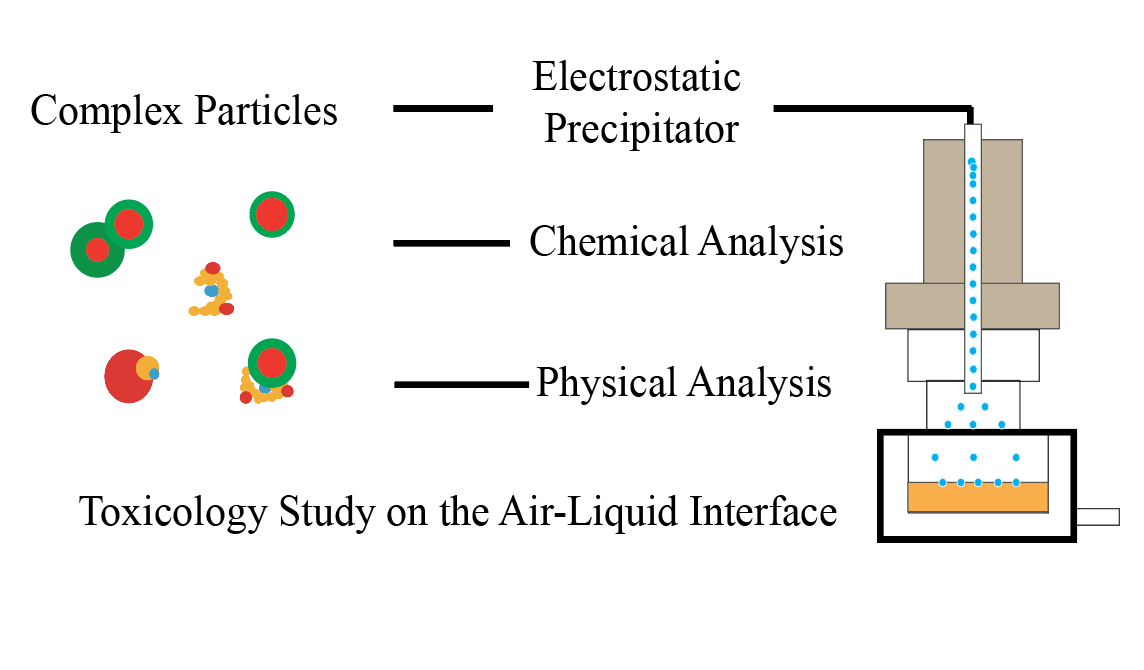
Health effects of complex aerosol particles
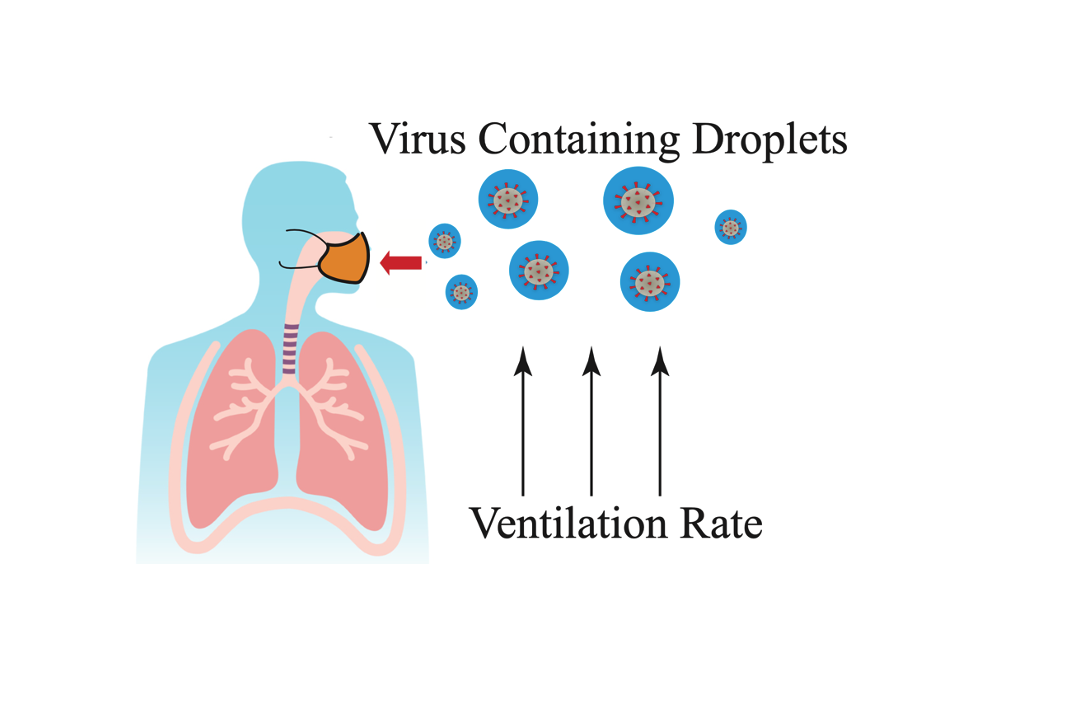
Aerosol properties and virus tranmission
